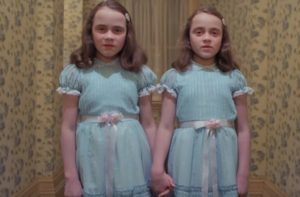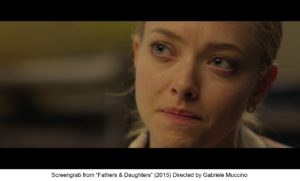I believe that the best scene within the film “Citizen Kane” was when the main character Charles Foster Kane signs the “Declaration of Principles”. This is because a very well-used feature used in this scene that stuck out to me was the lighting use. This is when Charles is explaining to two other characters how important his document is and how it displays rules that should be followed for his newspaper. The lighting is used so that you are able to see the character’s faces clearly, apart from Kane’s; who is in complete darkness. This could be a metaphor for him slowly becoming alone and foreshadowing his tragic death. It is also used as irony due to Kane himself, later on, forgetting these rules and produces anything he wants. This shows him going off the rails because he’s refusing his own instructions that he deemed so important to other people.
Kane is proven to be a dreamer and one with a desire for people to love and rely on him, this is shown by this quote from earlier on in the scene: “I’ve got to make the New York Inquirer as important to New York as the gas in that lamp”. It is shown to the audience, later on in the film, that he wants love from everyone, despite himself not having any love to give them, just like the gas in the lights. Everyone loves his newspapers but not he personally, as no one cares to get to know him. The technology used to present the lighting was amazing for the time it was produced. The costume in this scene was another prominent feature that was used. The creative use of Mise-En-Scene was what I liked most about this particular scene. The two men in this scene are both well-dressed in suits, whereas Kane is unpresentable in an untidy uniform. This emphasises to the audience his oncoming increase of apathy and lack of control with the company which, again, foreshadows he going off the rails.
In this scene, the Brechtian technique of “breaking the fourth wall” has been used. Jedidiah is the one telling the story in a flashback, therefore he knows how it ends, unlike the audience. Therefore his quote: “I have a hunch it might turn out to be something important”, as he stares right into the camera, is foreshadowing to the audience by directly addressing them. Cinematography is another well-used feature within this scene. Firstly, throughout the song, the camera is facing upwards to Kane. As though the audience is beneath him. Also, it appears to be a long-take lasting two minutes. This forces the audience to watch the entire time he is signing the document, despite us knowing the lie. Also, the lens is fully in focus allowing us to see the clear faces of each character, this way the lighting is what’s used to draw attention towards Kane. Almost like an opposite spotlight. The amazing use of Mise-En-Scene, foreshadowing and breaking the fourth wall is why I chows this specific scene as my favourite as also why, I believe, Citizen kane was the greatest film ever made.




